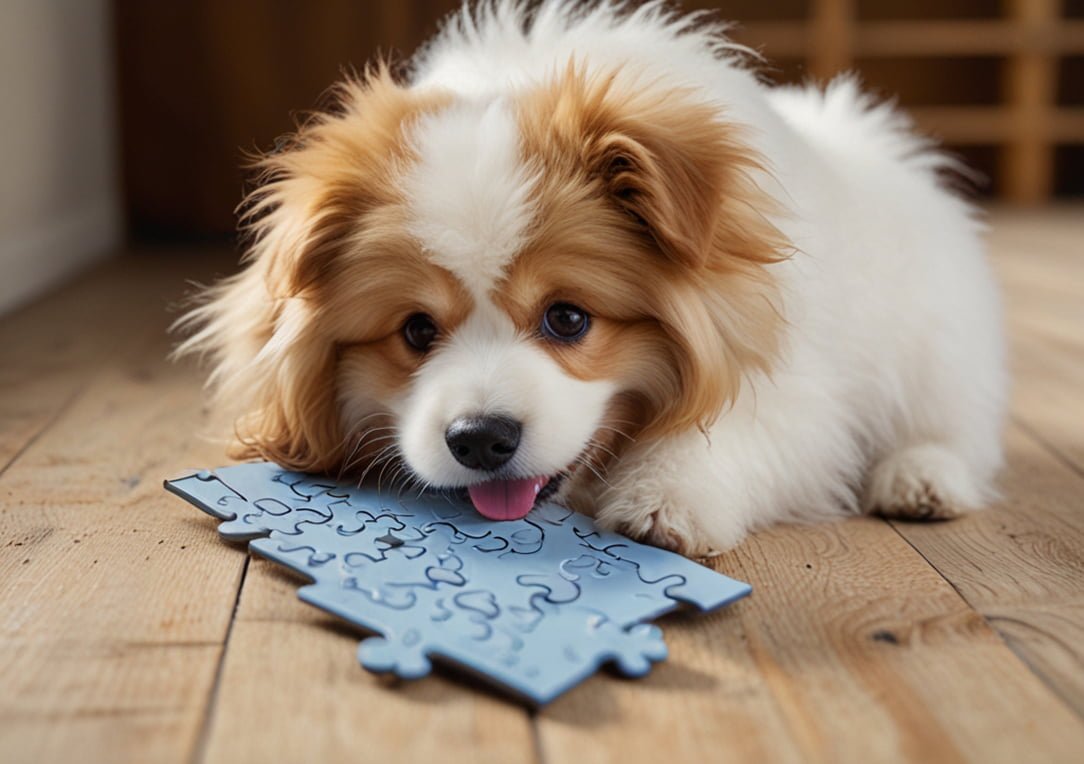Autism puzzles often symbolize the complexity and diversity of the autism spectrum. They represent the enigmatic nature of autism and the search for understanding.
Autism Spectrum Disorder (ASD) is a developmental disorder marked by difficulties in social interaction, communication, and repetitive behaviors. The image of colorful puzzle pieces signifies the multifaceted and unique challenges faced by individuals with autism. Each puzzle piece reflects the diverse skills and abilities that people on the autism spectrum may possess, as well as the gaps in knowledge that researchers strive to fill.
Understanding autism is like solving a puzzle with numerous pieces, requiring patience, insight, and a comprehensive approach to support those affected. As awareness grows, autism puzzles underscore the importance of fitting together different perspectives to create a coherent understanding of the condition, encouraging acceptance and tailored interventions to enhance the quality of life for individuals with autism.
Are Autistic People Good At Puzzles?
Autistic individuals often exhibit exceptional analytical skills, making them adept at solving puzzles. The intricate patterns and logical sequencing in puzzles align well with the strengths typically found in those on the autism spectrum.

The Fascination With Autistic Individuals And Puzzle Solving
Understanding how people on the autism spectrum interact with puzzles reveals much about their unique cognitive processes. Puzzles often involve pattern recognition, logical reasoning, and problem-solving skills – areas where some autistic individuals might excel. Let’s delve into why puzzles might be an irresistible lure for many with autism.
Cognitive Strengths In Autism
- Pattern Recognition:
Many autistic people possess enhanced pattern recognition abilities, enabling them to see sequences and anomalies that others might miss. This natural propensity can make solving puzzles particularly satisfying.
- Attention to Detail:
The meticulous nature of puzzle-solving aligns well with the often acute attention to detail witnessed in individuals with autism. This focused attention helps them notice and piece together minute details that form the bigger picture.
- Systemizing Abilities:
Autism is frequently associated with strong systemizing abilities – the drive to analyze or construct systems. Puzzles are, in effect, systems with interlocking parts, making them a fitting challenge for such minds.
Autistic Challenges With Puzzles
While it’s true that puzzles might appeal to the strengths of many on the spectrum, it’s crucial to acknowledge that autism is a broad spectrum with diverse manifestations. In some cases, puzzles that require social intuition or emotional interpretation might not align as neatly with an autistic individual’s cognitive style.
Puzzles As A Learning Tool
Educators and therapists often use puzzles as a learning tool for autistic children and adults, taking advantage of their inclination towards this kind of activity. Puzzles can serve as:
- Educational Devices: They teach problem-solving and can improve motor skills and hand-eye coordination.
- Social Interaction Facilitators: Group puzzle activities encourage collaborative skills and verbal communication.
- Therapeutic Aids: Puzzles can reduce anxiety and stress, providing a calming and structured task for those with autism.
The Unique Autism Spectrum
Remember, each autistic individual is unique, and while some may show remarkable prowess with puzzles, others may not demonstrate the same affinity. It’s this diversity within the autism spectrum that makes it challenging and rewarding to understand the intricate puzzle of autism itself.
How Do Autistic People Act?
Autistic individuals often display unique behavioral patterns that can include repetitive actions and challenges in social interactions. Each person with autism is distinct, with a spectrum of traits that contribute to humanity’s diverse puzzle.
Understanding Autistic Behaviors
Exploring the diverse behaviors of individuals with autism is crucial to foster empathy and support. Behavior is a form of communication, and it is paramount to recognize that each person on the spectrum will exhibit unique patterns.
Social Interaction Varieties
People with autism may interact in ways that are distinctive:
- Eye contact: Limited or seemingly avoid the gaze of others.
- Response to social cues: Challenges in understanding and reacting appropriately.
- Verbal communication: Some individuals are non-verbal, while others have a rich vocabulary but might struggle with the conversational give-and-take.
- Physical gestures: They might use fewer gestures to communicate or misunderstand the gestures of others.
Embracing Routine And Structure
For many autistic individuals, a consistent routine is not just preferred but necessary:
- Adherence to schedules: A strict following of daily routines, with potential distress when changes occur.
- Repetitive behaviors: Engaging in specific patterns of activities or interests that provide comfort and predictability.
Processing Sensory Inputs
The sensory experience of someone with autism is often intensified:
- Overstimulation: Reacting strongly to loud noises, bright lights, or crowded spaces.
- Fascination with sensory aspects: A deep interest in particular textures, sounds, or visual patterns.
Display Of Emotions
Decoding an autistic person’s emotional expression can be challenging:
- Facial expressions: They may not always match what is felt internally.
- Regulation of emotions: Intense reactions to seemingly minor events, or a lack of response to significant situations.
Unique Communication Styles
Observe that communication for autistic individuals can greatly vary:
- Literal understanding: Interpreting language very literally, missing nuances or figurative speech.
- Detailed discussions: A strong focus on favorite subjects, sometimes without recognizing if the listener is engaged.
Recognizing and appreciating the complexities in behaviors of autistic people is crucial. Raised awareness leads to better support systems and more inclusive environments, letting everyone shine in their true colors.

Does A Person On The Autism Spectrum Complete Jigsaw Puzzles Differently Than Others Do?
Autism spectrum individuals often approach jigsaw puzzles with unique strategies, reflecting divergent cognitive processing. Their problem-solving can vary, with some exhibiting heightened pattern recognition and focus, distinct from neurotypical methods.
Understanding Autism Spectrum Puzzle-solving Approaches
Step into the world of autism, and you’ll find that the way individuals on the spectrum engage with puzzles can be quite intriguing. While it’s essential not to generalize – as each person with autism is unique – there are fascinating observations regarding their puzzle-solving techniques that differ from neurotypical approaches.
Specialized Strategies In Puzzle Assembly
- Pattern Recognition:
Individuals with autism may exhibit heightened pattern recognition skills. Often, they can spot and utilize patterns and sequences that might go unnoticed by others, applying this keen observation to the assembly of puzzle pieces.
- Focus on Details:
For those on the spectrum, the intense concentration on minor details is common. They might approach a jigsaw puzzle by focusing on specific colors or shapes within the pieces, rather than the overall picture.
- Systematic Sorting:
Some may start by meticulously organizing pieces into categories based on edges, colors, or patterns. This methodical sorting could lead to a more streamlined assembly process.
The Role Of Sensory Preferences
Imagine sitting down with a puzzle. For some with autism, the tactile sensation of snapping pieces together is immensely satisfying. The sensory experience varies from one individual to another and can influence how they interact with a puzzle. While one person might relish the touch and sound of pieces interlocking, another may find visual joy in the growing image.
These sensory preferences can guide the puzzle completion process, sometimes leading to an unconventional but effective method.
Social Interaction And Shared Puzzle Activities
- Parallel Play:
It’s not uncommon for individuals with autism to participate in parallel play, where they are in the company of others but engage with puzzles independently. This can encourage a sense of community without the pressure of direct interaction.
- Collaborative Problem-Solving:
When comfortable, some may enjoy the collaborative aspect of puzzle-solving. This cooperative approach can help develop social skills and offer a shared sense of achievement upon completing the puzzle.
Memory And Repetition In Puzzle Completion
One of the more remarkable qualities of many individuals with autism is their memory. This powerful recall ability can be particularly advantageous when completing puzzles, as they might remember specific pieces’ placements from previous sessions or similar puzzles. Repetition and familiarity can enhance their enjoyment and competency in the task, often leading to impressive speeds and efficiency during the puzzle assembly.
Encouraging Puzzle Engagement For Skill Development
Engaging with puzzles is more than a pastime for many on the autism spectrum; it can be a tool for growth. The activity can be tailored to individual abilities and preferences, making it a versatile means of developing fine motor skills, spatial awareness, and problem-solving abilities.
By encouraging puzzle engagement in a way that aligns with their unique methods and approaches, we can support development while honoring their distinct way of viewing the world.
Navigating the complexities of autism is a journey filled with challenges and triumphs. Embracing the puzzle of each individual’s experience is vital. Together, we can work towards understanding and support. Let’s continue seeking pieces that fit, creating a complete picture of acceptance and inclusion.
Keep learning, keep supporting, and never stop solving the autism puzzles that enrich our world.







